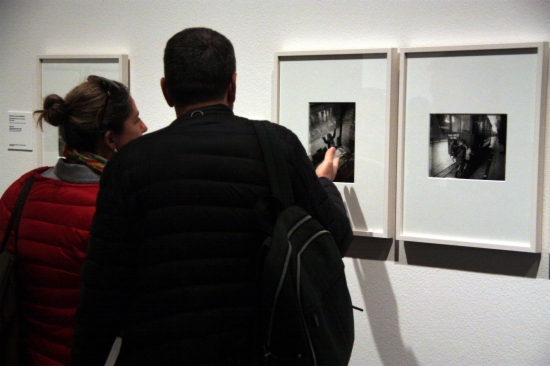Interwar photography from the experimental Gabriel Casas on show in National Art Museum of Catalonia
From Wednesday 29th of April onwards, the National Art Museum of Catalonia (MNAC) will exhibit 'Gabriel Casas: Photography, journalism and modernity, 1929-1939', the first great monographic exhibition dedicated to one of the most important photographers of the interwar period. Standing out as the photographer who introduced 'New Vision' photography in Spain, Casas achieved "great maturity" in the decade represented in this exposition with 120 photographs and 4 thematic areas: 'Records', 'New Vision', 'Photography' and 'Portraits', as explained by the curator Juan Naranjo. The exhibition dedicated to Gabriel Casas is a cooperative production between the MNAC together with the National Archive of Catalonia and La Caixa's foundation for social and cultural work. The show will later travel to the CaixaForum art galleries in Girona (North-East Catalonia) and Tarragona (South Catalonia).

Barcelona (ACN).- From Wednesday 29th of April onwards, the National Art Museum of Catalonia (MNAC) will exhibit 'Gabriel Casas: Photography, journalism and modernity, 1929-1939', the first great monographic exhibition dedicated to one of the most important photographers of the interwar period. Standing out as the photographer who introduced 'New Vision' photography in Spain, Casas achieved "great maturity" in the decade which is represented in the exposition with 120 photographs and 4 thematic areas: 'Records', 'New Vision', 'Photography' and 'Portraits', as explained by the curator Juan Naranjo. The exhibition dedicated to Gabriel Casas is a cooperative production between the MNAC together with the National Archive of Catalonia and La Caixa's foundation for social and cultural work. The exhibition will later travel to the CaixaForum art galleries in Girona (North-East Catalonia) and Tarragona (South Catalonia).
Images of Gabriel Casas, one of the leading figures in photography from the 1930s, have been retrieved and 120 of his photos will be shown in a new exhibition at the MNAC in Barcelona. "Without a doubt, Gabriel Casas is one of the greatest unknown people from the interwar period" laments Juan Naranjo, the curator of the exposition. "With this exhibition we hope to show his most experimental side and give him the recognition that he deserves", he said. The first great monographic display of the photographer will focus on 10 years of his life, the decade between the Wall Street Crash of 1929 and the beginning of the Second World War, with the Spanish Civil War providing an introduction.
The choice comes about for two reasons, declared Naranjo. Firstly, these years were a "very special moment" for the spreading of modern photography, in which Casas was a pioneer in Spain, being the first to use the photographic language of the 'New Vision'. Secondly, it was in this period (1929-1939) when the photographer entered his "mature period" and obtained considerable international recognition, added Naranjo.
The 120 instants selected have been grouped into four areas in the exposition. 'Records' includes a series of images of Casas' journalistic photography, in a context in which the illustrated magazines and the cinematographic news bulletins transformed the way in which to inform people, with the rise of the importance of the image. In the 'New Vision' area, it is possible to see significant examples of how Casas connected with the European Avant-Garde and how, it was he who introduced the movement to Spain, a movement that used aesthetic language and tools that had never been seen before such as low-angle and high-angle shots, overprints, axial symmetry, and shadows.
Thirdly, under the heading 'Social Photography', the exhibition highlights the interest of the photographer to document the lives of the underprivileged classes of Barcelona in 1930, and finally in 'Portraits', there is a selection of images of celebrities and ordinary people, which Casas approaches with a documentary aesthetic, surrealism or 'New Vision'.
As with so many other photographers, writers and artists, the Civil War and the subsequent dictatorship was a failure, "a radical change" regarding the career that he had set out for himself before. "The distribution platforms of modernity disappeared," said Naranjo. In addition, Casas was banned by Franco's regime from doing photojournalism and was only allowed to do industrial photography or portraits or illustrations, he explained.
The cooperative exposition between MNAC, the National Archive of Catalonia and La Caixa's Foundation can be seen in Barcelona's museum from the 30th of August onward. Later, the exposition will go on tour and be displayed in Girona CaixaForum (September 2015 - January 2016) and after to the Tarragona CaixaForum (February-May 2016).